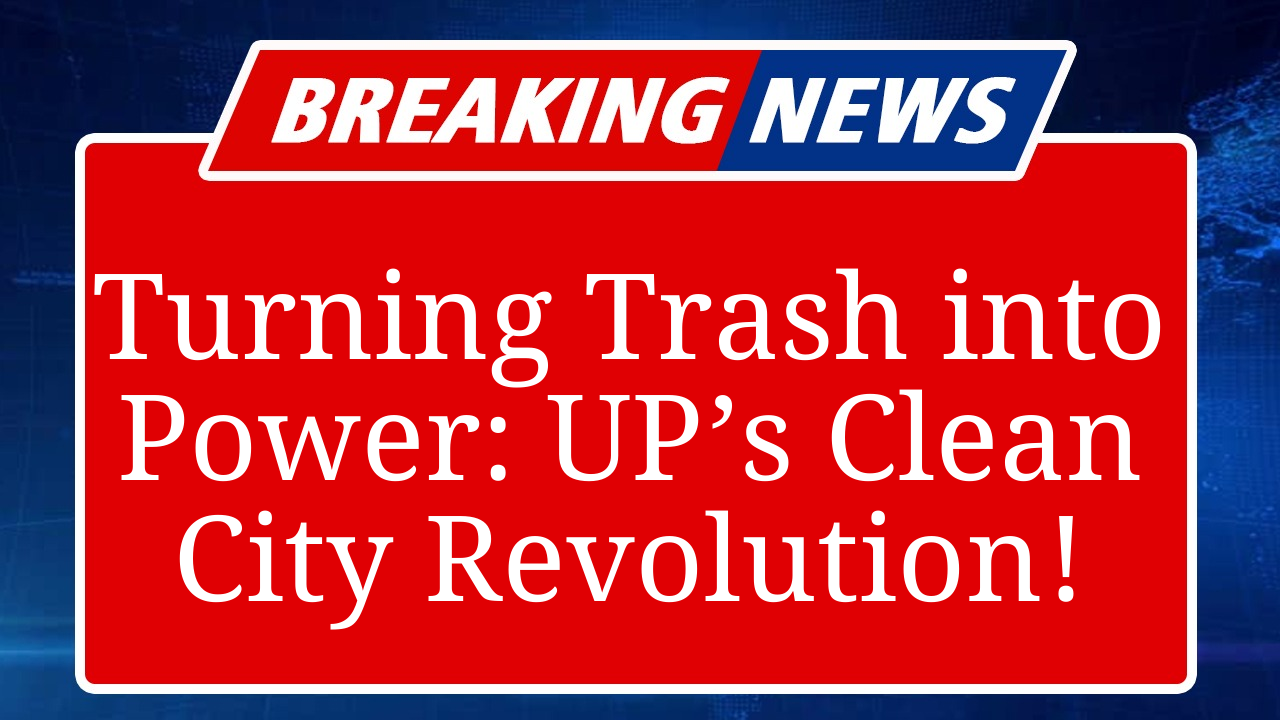Uttar Pradesh is advancing its clean city initiative with waste-to-energy (WTE) plants, converting municipal waste into electricity and biogas. Recent developments include new facilities in Varanasi and Lucknow, supported by policies like the Bioenergy Policy 2022. Despite challenges like waste segregation, these plants aim to reduce landfill use and pollution, aligning with sustainable urban development goals.
Uttar Pradesh Harnesses Waste-to-Energy for Cleaner Cities
Uttar Pradesh, one of India’s most populous states, is making strides in tackling its urban waste crisis through waste-to-energy (WTE) plants, aligning with the national push for sustainable urban development. These facilities, designed to convert municipal solid waste into electricity, biogas, or bio-CNG, are emerging as a cornerstone of the state’s clean city mission. With rapid urbanization generating approximately 1,50,761 tonnes of solid waste daily across India as of 2019-’20, Uttar Pradesh is leveraging WTE technologies to address both waste management and renewable energy needs.
Recent developments highlight the state’s commitment to this initiative. In 2019, the Uttar Pradesh government signed an agreement with Dutch company GC International to establish WTE plants in Muzaffarnagar and Ghaziabad, with an investment of Rs 2,000 crore. These plants are expected to process municipal solid waste and generate electricity at Rs 7.5 per unit, supporting the state’s energy grid while reducing landfill dependency. Additionally, a WTE plant in Varanasi, backed by NTPC with an investment of Rs 180 crore, is set to process 500-600 tonnes of waste daily, producing torrefied charcoal for thermal power plants.
The state’s Bioenergy Policy 2022 has further catalyzed these efforts, offering incentives like capital subsidies, 100% state GST reimbursement for a decade, and stamp duty exemptions for bioenergy projects. As of 2023, 14 bioenergy projects have been sanctioned under this policy, with several focusing on WTE technologies like biomethanation and incineration. Biomethanation, which involves anaerobic digestion of organic waste to produce biogas, is particularly suited for Uttar Pradesh’s large volumes of biodegradable waste from agricultural residues, food processing, and municipal sources. Incineration, another key technology, burns segregated municipal solid waste or refuse-derived fuel to generate steam for electricity production.
Uttar Pradesh’s industrial sector also contributes significantly to WTE potential. The state has over 150 MW of energy production capacity from industrial waste, including from distilleries, dairies, and pulp and paper mills. These projects not only generate thermal or electrical energy for industries but also reduce environmental pollution by minimizing untreated waste disposal.
However, challenges persist. Effective waste segregation remains a hurdle, as unsegregated waste with high moisture content and low calorific value—often below the 1,800 kcal/kg needed for self-sustaining combustion—reduces the efficiency of WTE plants. For instance, a previous attempt in Lucknow to establish a 5 MW WTE plant in 2001 failed due to inadequate waste supply, underscoring the need for robust waste management systems. Experts emphasize that municipalities must enforce strict segregation practices and invest in decentralized waste processing to ensure the viability of these plants.
The state is also exploring innovative solutions. In June 2025, Andhra Pradesh Minister P. Narayana visited Lucknow to study its WTE facilities, indicating Uttar Pradesh’s growing reputation as a model for waste management. The Ministry of New and Renewable Energy’s Waste to Energy Programme supports these efforts with central financial assistance, offering 20% higher subsidies for plants in special category states like Uttar Pradesh’s neighbor, Uttarakhand. Applications for such funding are processed through the BioURJA portal, with mandatory performance evaluations to ensure project efficiency.
Despite the promise, WTE plants face criticism for environmental concerns. Incineration-based plants, like the one in Delhi’s Okhla, have been linked to toxic emissions, raising health concerns among nearby residents. In Uttar Pradesh, careful planning is needed to ensure compliance with air pollution control standards and to avoid replicating such issues. The state’s focus on biomethanation and gasification, which produce fewer emissions, could mitigate these risks.
Uttar Pradesh’s WTE initiatives are a step toward achieving the United Nations’ Sustainable Development Goals, particularly SDG 7 (Affordable and Clean Energy) and SDG 11 (Sustainable Cities and Communities). By reducing landfill use, generating renewable energy, and promoting a circular economy, these plants are poised to transform urban waste management. However, their success hinges on addressing technical and policy challenges, particularly around waste segregation and public awareness.
Disclaimer: This article is based on information sourced from recent news reports, government websites, and industry analyses. While every effort has been made to ensure accuracy, readers are advised to verify details with official sources for the latest updates.

